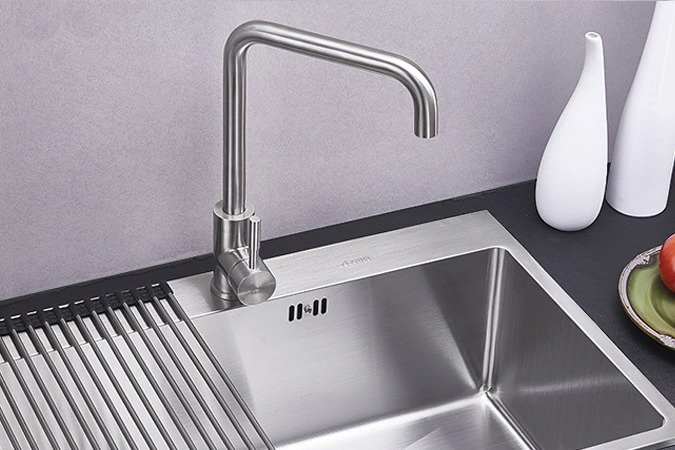Stainless steel - why is it called 'stainless steel'?

Stainless steel is most commonly found in kitchen utensils, faucets, sinks.
Stainless steel (English: Stainless steel) is often called stainless steel in Vietnam. The origin of this name is the French phrase "inoxydable".
In the metallurgical field, stainless steel is defined as a steel alloy, having a minimum chromium content of 10.5% by mass and a maximum of 1.2% carbon by mass. The different participation of components including chromium, nickel, molybdenum, nitrogen leads to different crystal structures giving different mechanical and mechanical properties of stainless steel.
However, the most outstanding ability of stainless steel is corrosion resistance. This happens because the surface of stainless steel forms a passive chromium oxide film outside to prevent surface corrosion as well as corrosion deep into the metal's structure.
This oxide layer itself can be "patched" in the event of a scratch or cut. To do this, the above-mentioned passive oxide film needs to be supplied with oxygen. Therefore, stainless steel or stainless steel will have less corrosion resistance in low-oxygen environments.

Cover plate made of stainless steel used for Walt Disney Concert Hall in Los Angeles, California
The corrosion resistance of stainless steel, combined with its high strength and glossiness, makes it the ideal material for many applications that require both the strength of steel and corrosion resistance in a wide variety of fields. of life.
In particular, stainless steel can be rolled into sheets, rods, threads or tubes - used in the manufacture of cooking utensils, cutlery, surgical instruments, or chemical storage tanks. In addition, stainless steel is also an important construction material in large buildings or acts as industrial equipment in paper mills, chemical plants, water treatment, food processing.
- Explain the chemical mechanism that makes stainless steel 'anti-rust' against the impact of the environment
- Steel 3D prints stainless and is more resistant to ordinary steel
- New steel is 62 times more rigid
- Successfully developed stainless steel mesh for water to flow through and keep the oil in place
- Mysterious iron pillar of 1,600 years old stainless steel
- The largest steel in the world
- Incredible but great inventions
- Video: 8-foot starfish object suspected of alien equipment
- 'Armor' for PC
- Two poisonous substances in Chinese heat-keeping bottles kill people very quickly
- The US built the world's first solar steel factory
- How long ice tray nowhere?
 The most famous scientific failures in history
The most famous scientific failures in history Mysterious genius mechanic and the machine froze time
Mysterious genius mechanic and the machine froze time The son carries the 'bad gene' of genius Albert Einstein
The son carries the 'bad gene' of genius Albert Einstein Isaac Newton
Isaac Newton